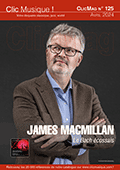Domenico Scarlatti (1685-1757)Sonate en sol majeur, F 232, K 284, L 90
Sonate en sol majeur, F 231, K 283, L 318
Sonate en mi mineur, F 211, K 263, L 321
Sonate (Pastorale) en do majeur, F 457, K 513, L S3
Sonate en fa majeur, F 224, K 276, L S20 4
Sonate en fa mineur, F 133, K 183, L 473
Sonate en do mineur, F 16, K 58, L 158
Sonate en fa mineur, F 29, K 69, L 382
Sonate en fa majeur, F 43, K 82, L 30
Sonate en ré mineur, F 54, K 92, L 362
Sonate en ré mineur, F 242, K 294, L 67
Sonate en sol mineur, F 55, K 93, L 336
Sonate en sol majeur, F 276, K 328, L S20
Sonate en ré majeur, F 235, K 287, L S9
Sonate en ré majeur, F 236, K 288, L 57
Sonate en ré majeur, F 229, K 281, L 56
Sonate en si mineur, F 48, K 87, L 33
Sonate (Pastorale) en ré majeur, F 361, K 415, L 511
Sonate en ré mineur, F 363, K 417, L 462
Nicola Reniero, orgue
Orgue Diesenzano del Garda, Italie, Serassi Brother (1835), Marco Fratti (2014)
